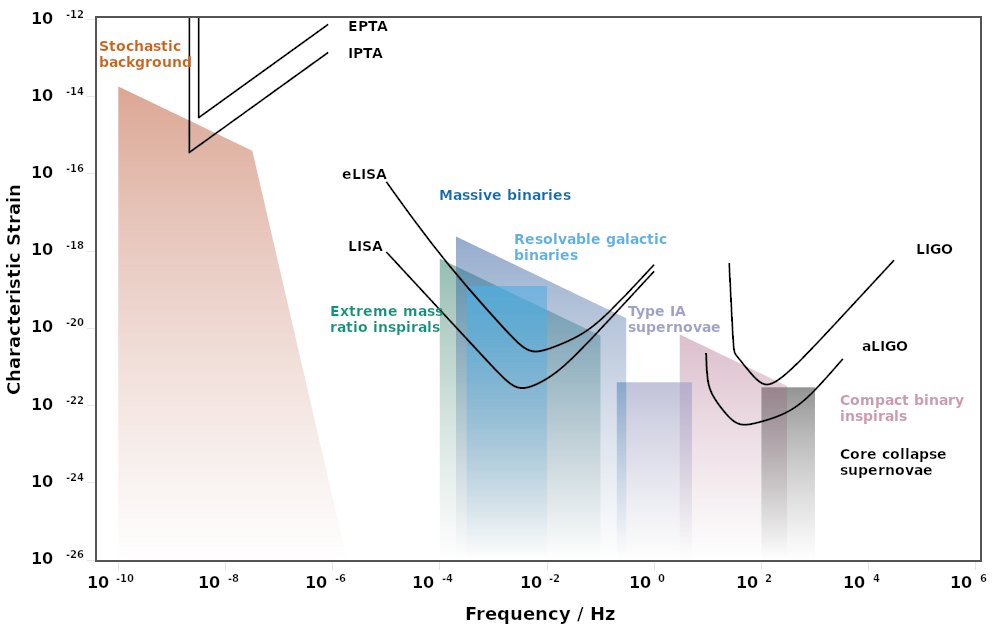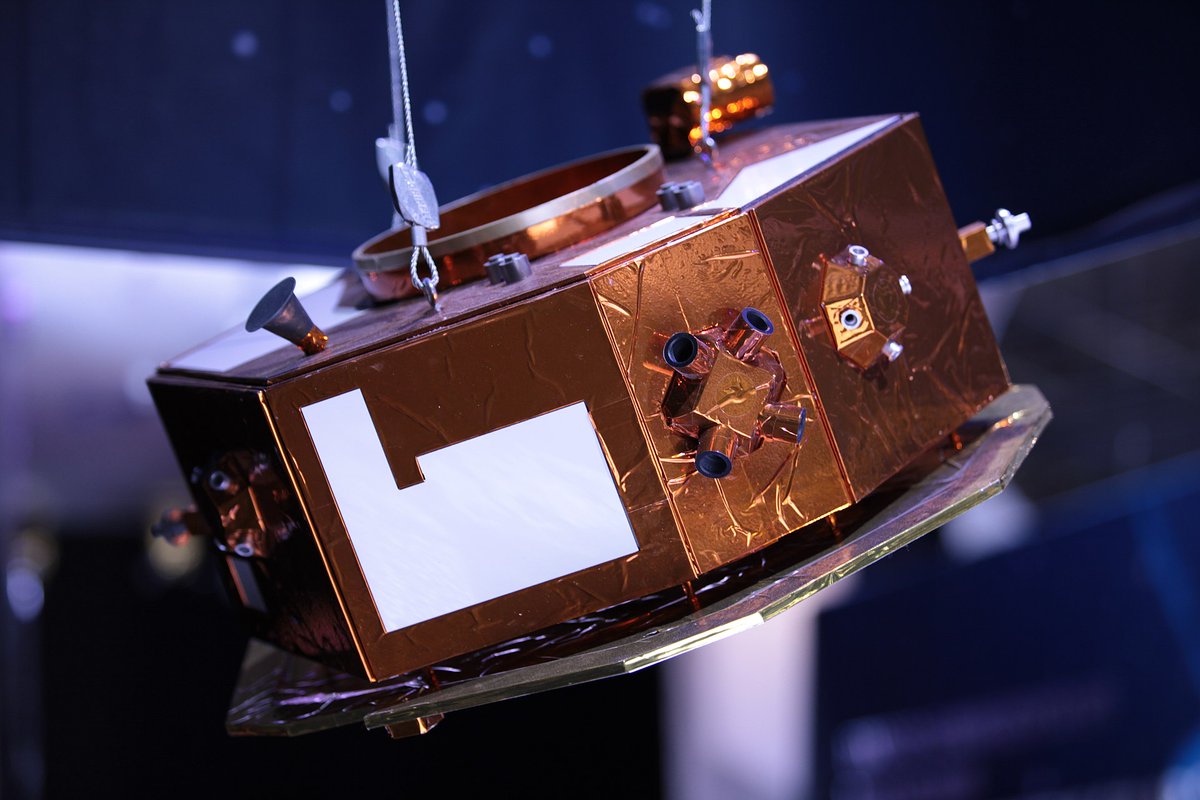Let& #39;s nerd out about the LISA mission today!!! Are you excited, I am?
LISA is a planned gravitational-wave detector in space. In SPACE!
The three satellites orbits around the sun, trailing the earth by about 20 degrees. They shoot lasers off each other, and passing gravitational-waves register as change in frequency of the laser light.
The three satellites orbits around the sun, trailing the earth by about 20 degrees. They shoot lasers off each other, and passing gravitational-waves register as change in frequency of the laser light.
The distance between the satellites - the arm length - is going to be 2.5 million km (about 1.5 million miles)
It turns out that frequency of gravitational-waves we see depends on the size of the detector; LISA targets a much lower frequency band than LIGO does.
It turns out that frequency of gravitational-waves we see depends on the size of the detector; LISA targets a much lower frequency band than LIGO does.
LISA will see some of the same blackhole that LIGO will as they sweep through. That is because the frequency of binary mergers gets higher the closer they get
With luck once LISA is launched we can in principle even predict when LIGO will some of the merger in advance.
With luck once LISA is launched we can in principle even predict when LIGO will some of the merger in advance.
One of coolest sources that LISA will see are the extreme mass ratio inspirals (EMRI). These are almost uniquely detectable by LISA. I can& #39;t wait for when we actually see one for the first time.
So what are EMRIs?
So what are EMRIs?
Almost every large galaxy has a supermassive blackhole at its center; behemoths upto billions of times more massive than the sun.
An EMRI occurs when a smaller object - likely a smaller blackhole is capture by its gravity and spirals inward into the supermassive one.
An EMRI occurs when a smaller object - likely a smaller blackhole is capture by its gravity and spirals inward into the supermassive one.
Gravitational-waves from from the inspiral can let us space-time cartography - i.e map the space-time around supermassive blackhole and test physics at high gravities.
How awesome is that!!!
How awesome is that!!!
LISA will also explore the population of intermediate mass blackholes. These are blackholes in the range of 100 - 100000 times the mass of the sun. We know they should exist but we haven& #39;t really seen any yet conclusively. If they exist LISA will probably detect one and ...
... and let us trace their evolution across time and their link as seeds to their more supermassive cousins in the depths of cosmic time.
More closer at home, LISA will also see galactic white dwarf binaries. White dwarfs are the end products of small stars like the sun, and they are scattered across the galaxy.
LISA will discover a lot of these systems, like a lot.
LISA will discover a lot of these systems, like a lot.
In fact through optical observations we already know of several that are sure-fire detections called verification binaries.
Astronomers are currently trying to pin the properties of these binaries so they can help verify that LISA is calibrated correctly.
Astronomers are currently trying to pin the properties of these binaries so they can help verify that LISA is calibrated correctly.
There is so much more potential science possible with the LISA mission.
LISA is scheduled to launch around 2034 and will have a nominal life time of 4 years. There are a few technical challenges still remaining to be solved.
LISA is scheduled to launch around 2034 and will have a nominal life time of 4 years. There are a few technical challenges still remaining to be solved.
Before closing, I should mention the LISA pathfinder mission. Pathfinder was a test mission launched in 2015.
The goal behind the mission was to see if the satellites can be kept in perfect free fall around the sun and if the accurate measurements needed are possible.
The goal behind the mission was to see if the satellites can be kept in perfect free fall around the sun and if the accurate measurements needed are possible.

 Read on Twitter
Read on Twitter




